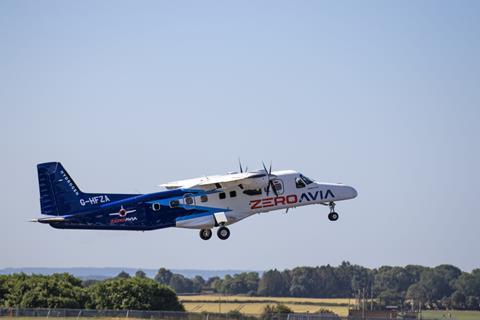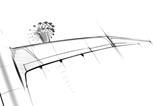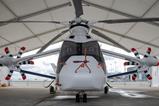ZeroAvia’s UK arm maintained its research and development spending in 2023, while nearly doubling headcount, its latest accounts reveal.
But with the company still working to commercialise its hydrogen fuel cell powertrain technology and consequently little revenue coming through the doors, losses also jumped sharply last year.

For the period to 31 December, the UK business spent £7.9 million ($10.4 million) on R&D activities, roughly in line with the £7.6 million recorded the previous year. But employee costs ballooned to £19.7 million – up from £9.2 million in 2022 – as staff numbers shot up to 203 from 104.
As a result, losses after tax also rose, hitting £28.7 million, up from £16.5 million the previous year. The company relies on continued support from its California parent, ZeroAvia Inc, to fund its ongoing activities.
Operating income for the period included £1.7 million in UK government grants – down from £4.3 million – including funding for the HyFlyer II project to demonstrate a certification-ready fuel cell powertrain aboard a modified Dornier 228.
That aircraft (G-HFZA) made its maiden sortie in January 2023 from its facility at Cotswold airport in southwest England, with the initial test phase wrapped up in July that year after 10 flights.
“The test campaign saw [the] aircraft fly at 5,000ft, perform an endurance test, operate in the wide temperature range from just above freezing to almost 30°C [86°F], and reach maximum allowable speed under the Permit to Fly issued by the [UK regulator],” the accounts say.
Other operating income last year included £5.1 million in “cost-sharing” payments from ZeroAvia Inc, as part of joint development activities on the fuel cell powertrain.
As the accounts point out, each company is “required to cover a specified percentage of the development costs”. Should ZeroAvia Ltd exceed its allotted share, then the excess is recognised as cost-share income from the US business.
Additionally, ZeroAvia Inc provided support to its subsidiary during the year through intercompany loans, with the figure owed growing from £25 million to £45 million.
That figure has likely increased this year as a proportion of the proceeds from the US company’s Series C funding round – it raised $35.4 million in the first quarter of 2024 – were provided to ZeroAvia Ltd “and recorded as an intercompany loan”, the accounts state.
ZeroAvia has yet to disclose the total amount is its seeking through the ongoing Series C round, but in July this year chief executive Val Miftakhov said it would be “over $100 million”.
Additionally, in May this year, ZeroAvia was awarded £7.8 million from the UK’s Aerospace Technology Institute to fund the development of high-temperature (HTPEM) fuel cells for aviation applications in a project running until 30 September 2026.
“HTPEM systems will be prime candidates to support ZeroAvia’s ZA2000 powertrain for 40-80-seat aircraft as well as a range of rotorcraft and eVTOL [electric vertical take-off and landing] applications,” the company notes.
R&D work on the HTPEM fuel cells is currently carried out at the company’s site in Sandwich, Kent – the former HyPoint business it acquired in September 2022. But Miftakhov says in future it is likely to consolidate all activities at Cotswold airport, on the other side of the country.
Spending and growth are likely to accelerate in the current period, the accounts state: “The directors expect the level of research and development activity to increase in [2024] in line with its programme plan, which encompasses an increase in both internal resources and research and development spend.”

















































